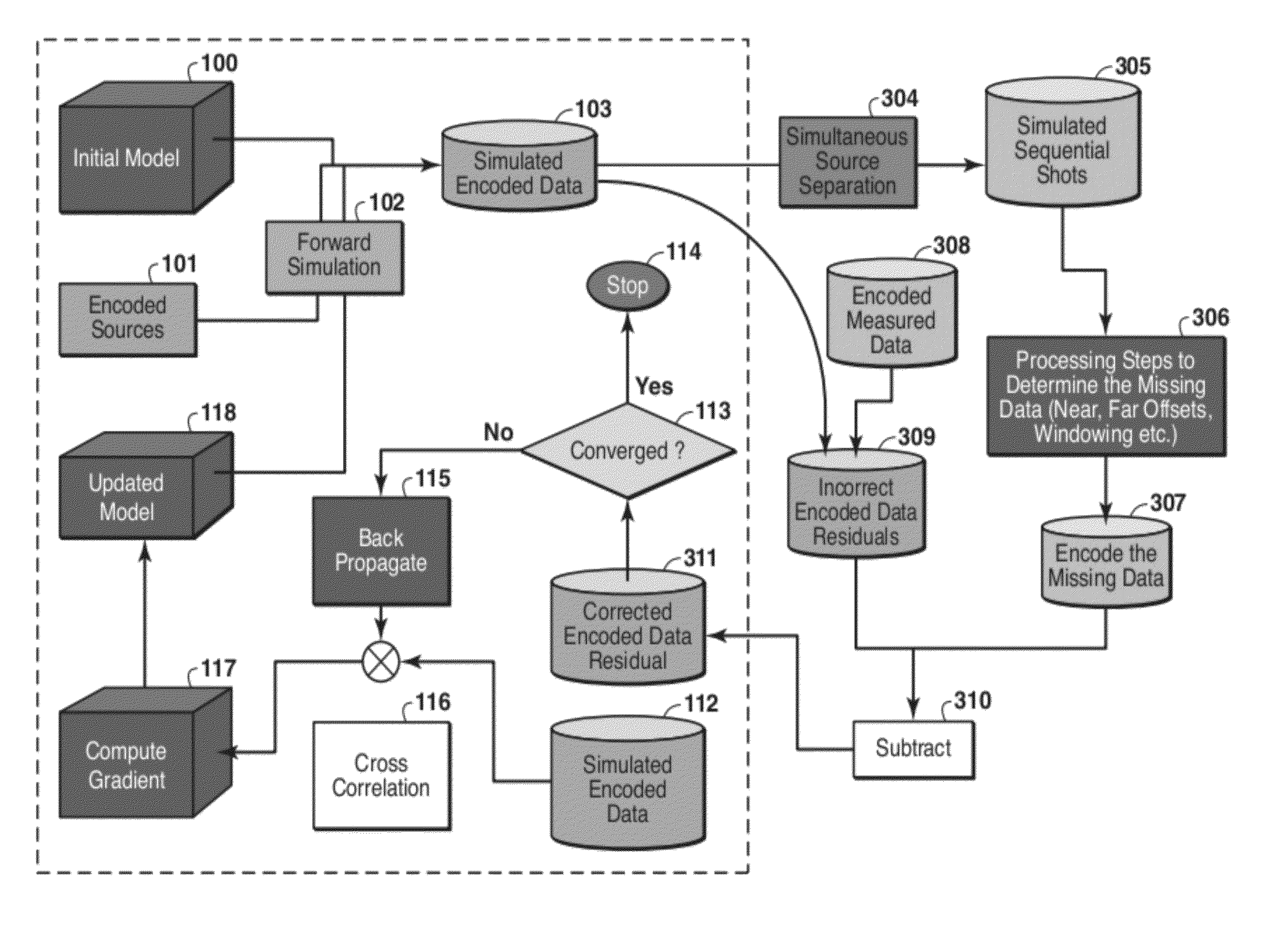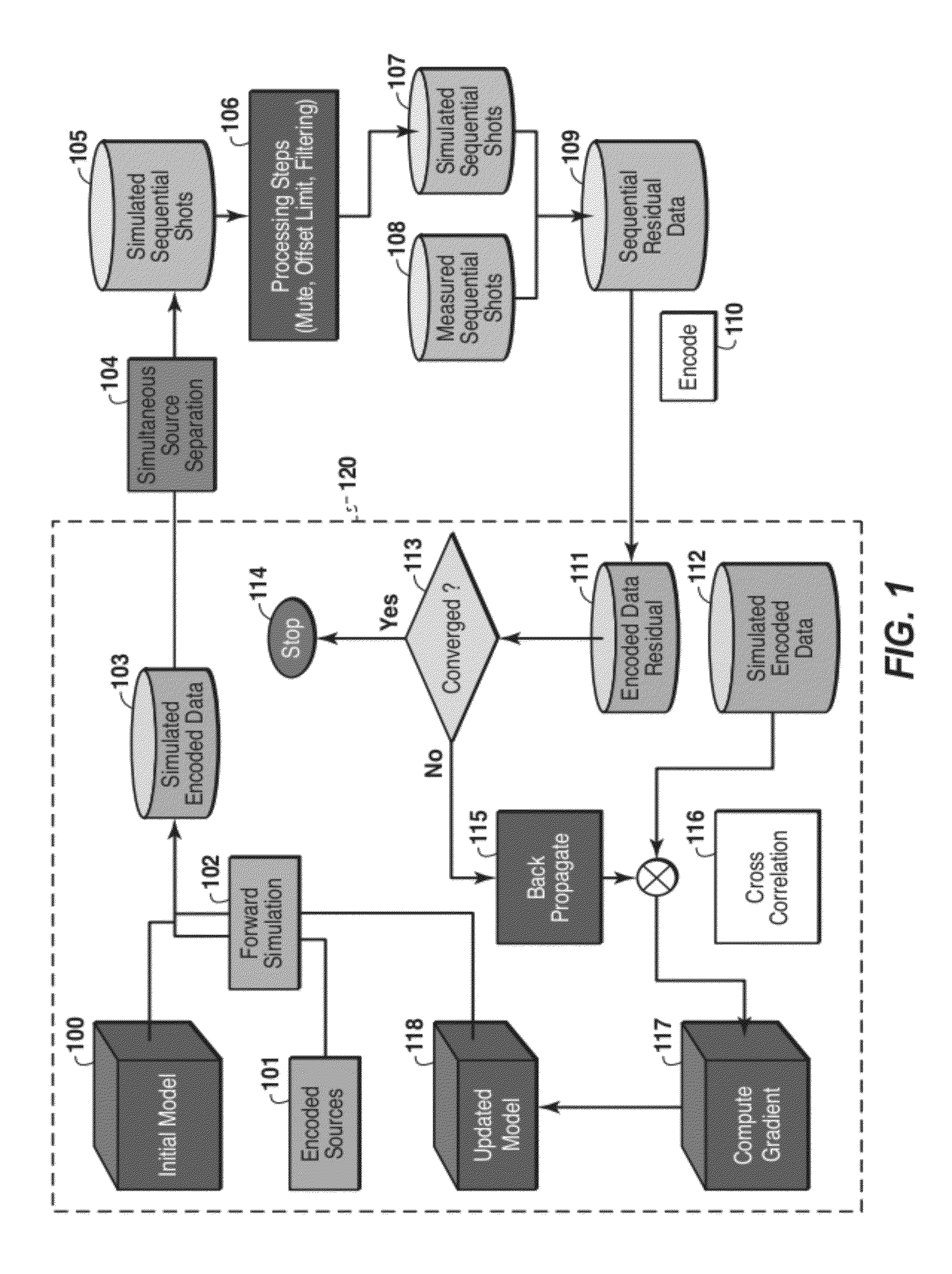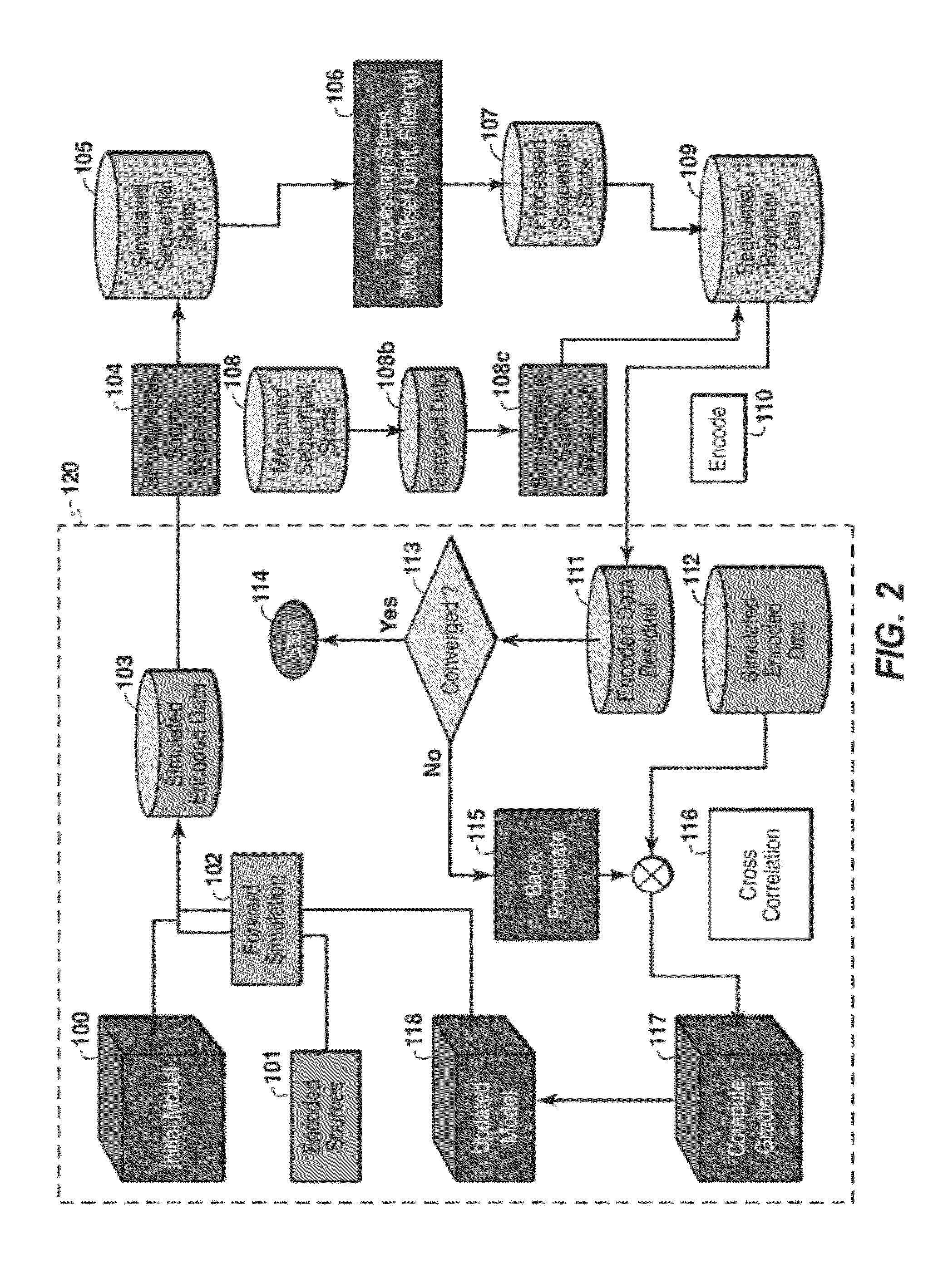Iterative inversion usually produces a more accurate model than non-iterative inversion, but is much more expensive to compute.
Unfortunately, iterative inversion is so computationally expensive that it is impractical to apply it to many problems of interest.
This high computational expense is the result of the fact that all inversion techniques require many compute intensive simulations.
The problem is exacerbated for iterative inversion, because the number of simulations that must be computed is proportional to the number of iterations in the inversion, and the number of iterations required is typically on the order of hundreds to thousands.
Since for geophysical problems N is usually very large (usually more that one million), this computation can be extremely
time consuming if it had to be performed for each individual
model parameter.
While computation of the gradients using the adjoint method is efficient relative to other methods, it is still very costly.
In particular the adjoint methods requires two simulations, one forward in time and one backward in time, and for geophysical problems these simulations are usually very compute intensive.
Also, as discussed above, this adjoint method computation must be performed for each measured data gather individually, increasing the compute cost by a factor of Ng.
The compute cost reduction gained by inverting combined sources is at least partly offset by the fact that inversion of the combined data usually produces a less accurate inverted model.
This loss in accuracy is due to the fact that information is lost when the individual sources are summed, and therefore the summed data does not constrain the inverted model as strongly as the unsummed data.
Therefore, this improvement has very limited applicability to the
seismic inversion problem.
A problem with this method is that coherent summation of the source gathers necessarily reduces the amount of information in the data.
This information is critical for updating the slowly varying background velocity model, and therefore Berkhout's method is not well constrained.
To overcome this problem many different coherent sums of the data (e.g. many plane
waves with different propagation directions) could be inverted, but then efficiency is lost since the cost of inversion is proportional to the number of different sums inverted.
Since the compute time is proportional to the area of this aperture, Mora's method does not produce as much efficiency
gain as could be achieved if the summed sources were near each other.
Thus, when summing more than 16 shots, the quality of the inversion was not satisfactory.
Since non-iterative inversion is not very costly to begin with, and since high
signal-to-
noise ratio inversion is desired, this technique is not widely practiced in the geophysical industry.
A problem with Ikelle's method is that the proposed decoding method will produce separated data having
noise levels proportional to the difference between data from adjacent sources.
This
noise will become significant for subsurface models that are not laterally constant, for example from models containing dipping reflectors.
Furthermore, this noise will grow in proportion to the number of simultaneous sources.
Due to these difficulties, Ikelle's simultaneous source approach may result in unacceptable levels of noise if used in inverting a subsurface that is not laterally constant.
In practice, a fixed receiver assumption is not strictly valid for most common
field data acquisition geometries.
This also violates the “fixed-receiver assumption.” In addition, due to logistical problems, it is difficult to
record data close to the source, and this means that near-offset data are typically missing.
Both of these factors mean that for a simultaneous source gather, every receiver location will be
missing data for some source shots.
 Login to View More
Login to View More  Login to View More
Login to View More 


